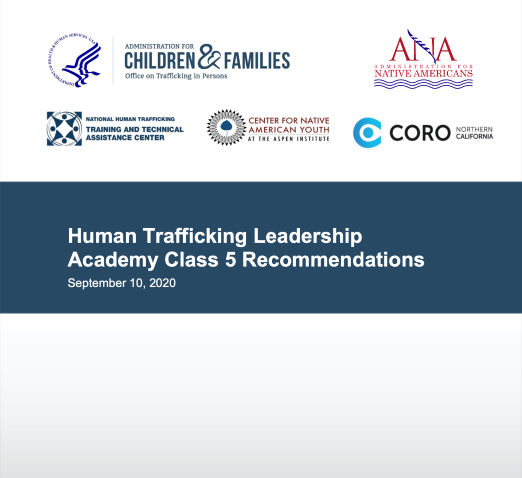Report
Human Trafficking Leadership Academy Class 5 Recommendations

Worldwide, Indigenous people are at a higher risk of human trafficking—including both sex trafficking and labor trafficking—than other diverse populations (Administration for Children and Families, 2018). Indigenous groups in the United States, including American Indian/Alaska Native, Native Hawaiian, and Pacific Islander populations, are especially at risk. The Human Trafficking Leadership Academy (HTLA) Class 5 fellows were asked to address the following project question:
“How can culture be a protective factor in preventing trafficking among Native youth?”
To answer this question and promote inclusivity, Class 5 fellows reframed it as follows:
“How can culture be a protective factor in preventing trafficking among all Indigenous youth?”
It is important to acknowledge the inclusivity of all Indigenous youth in this report, including Two-Spirit, Third-Gender, LGBTQIA+, girls, boys, Native Americans, Alaska Natives, Native Hawaiians, American Samoans, and so on.
It is also important to acknowledge that this report (1) provides foundational knowledge of historical context and the continued impact on Indigenous communities today and (2) identifies unique vulnerabilities, assets, and strengths found in Indigenous communities and cultures as a means of supporting the recommendations. While one report cannot capture all of the inherently unique histories and characteristics of all Indigenous people in the United States, the HTLA Class 5 fellows hope this report and its recommendations will provide a beginning to continued change, healing, and safety for all Indigenous youth—now and for future generations.





